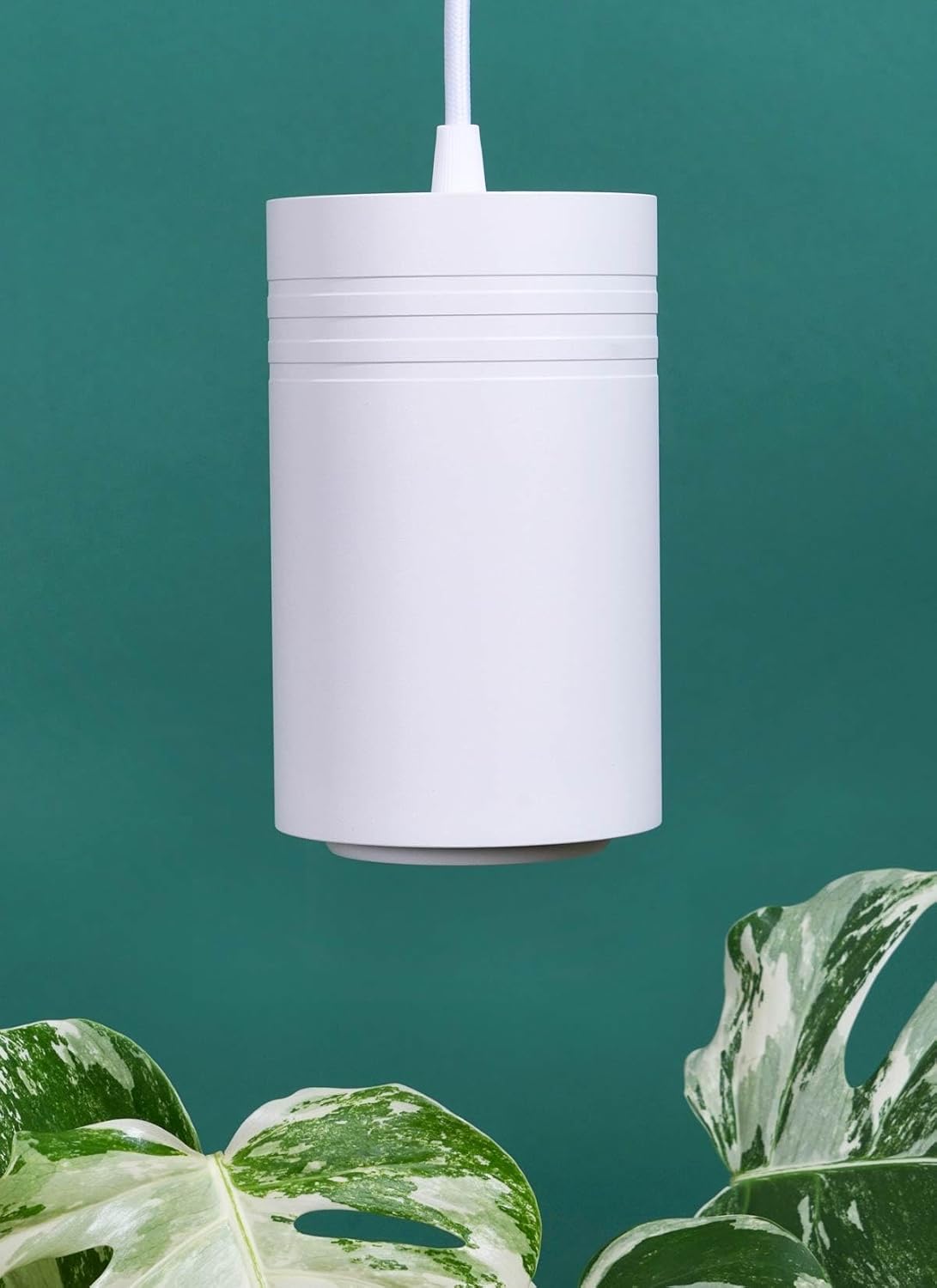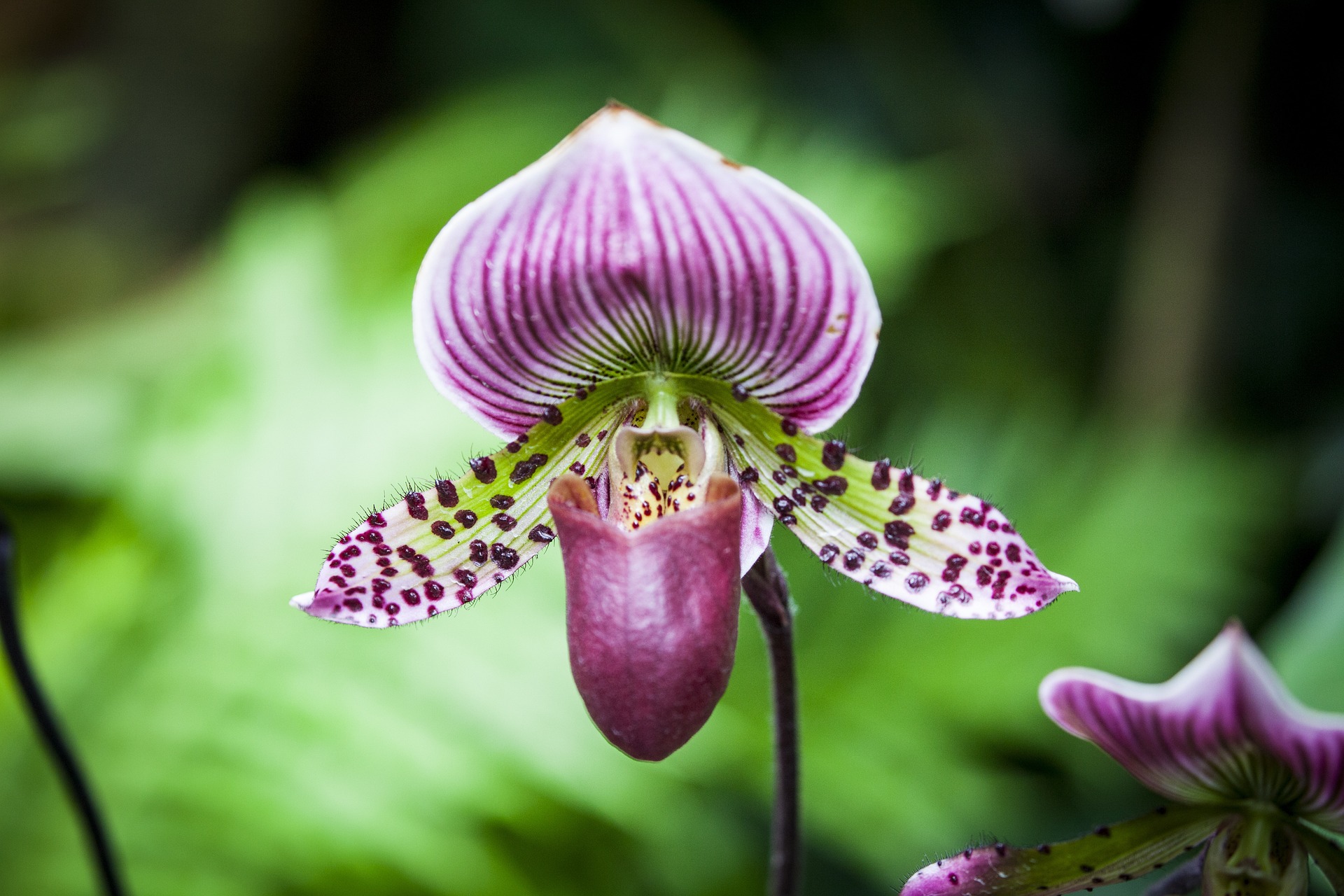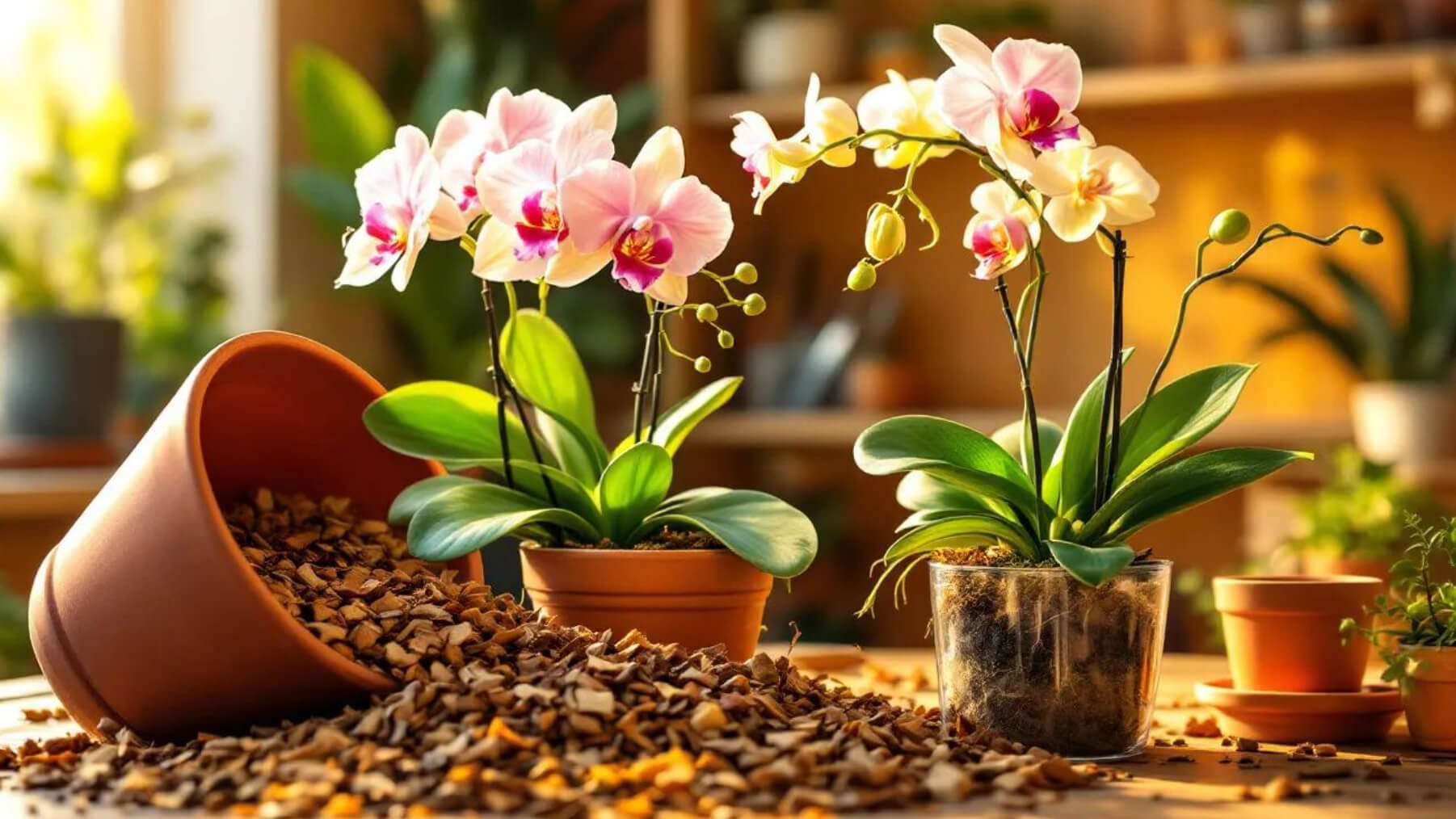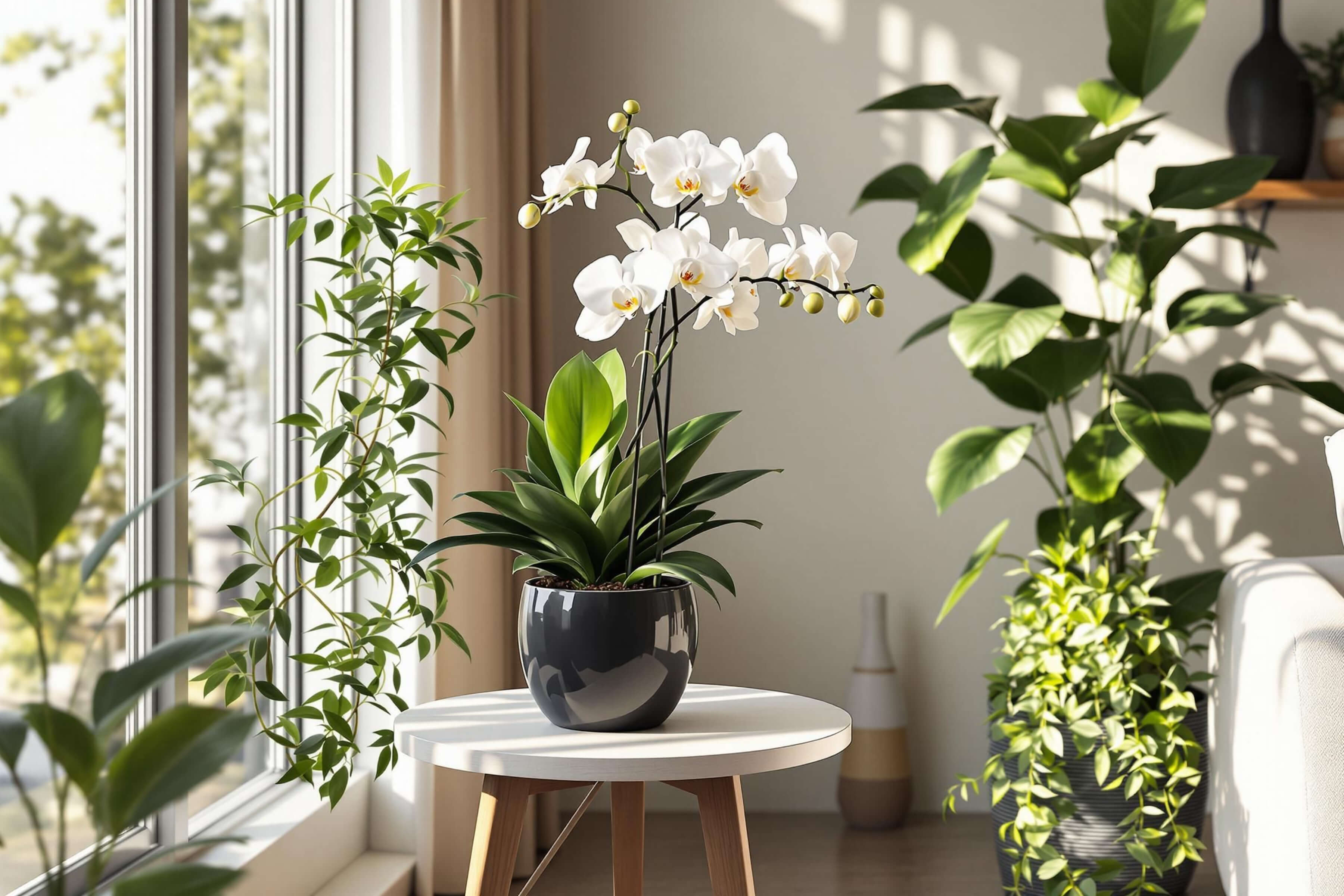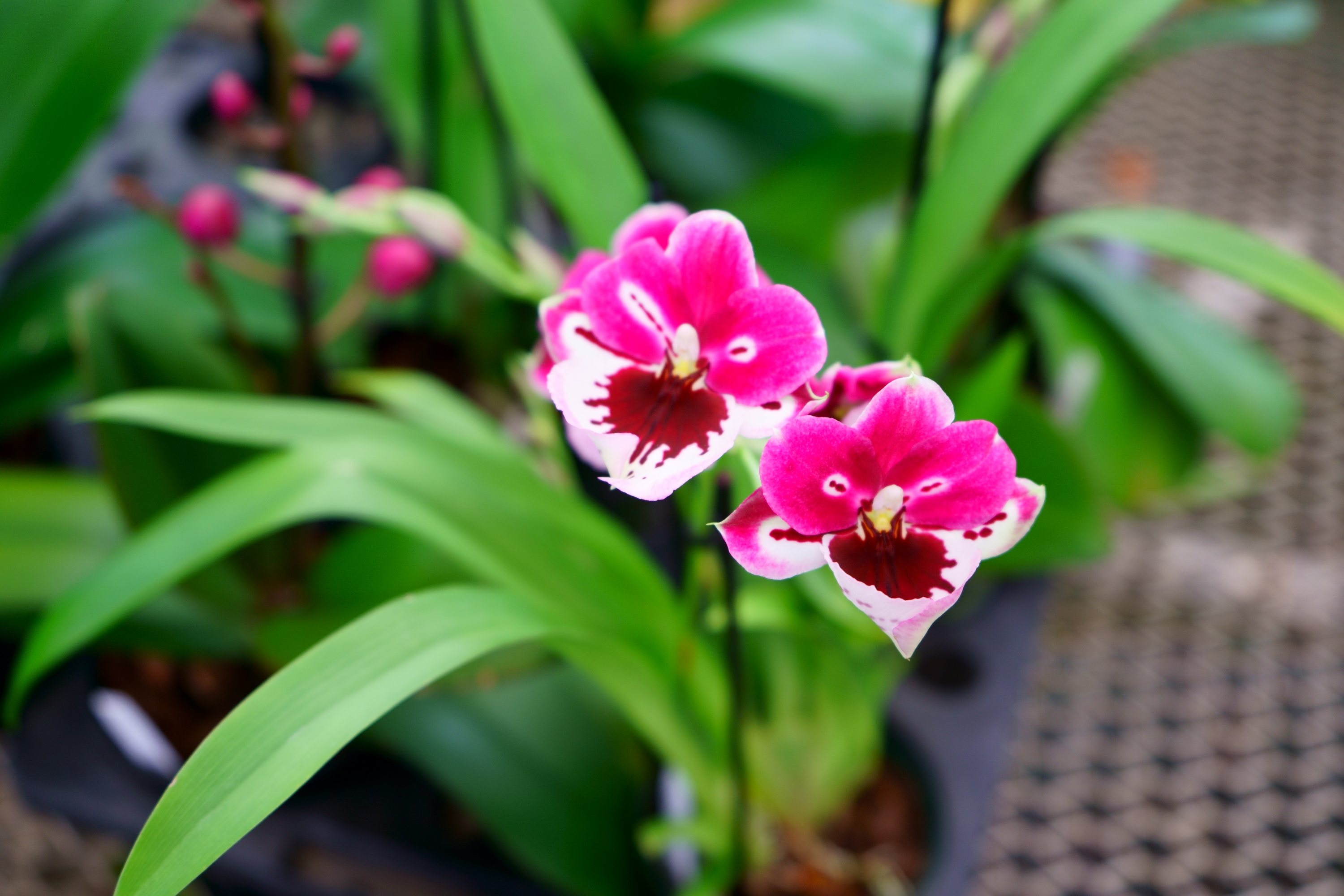- Home
- Orchid Pests
Orchid Pests: Identification, Prevention, and Treatment
Orchids are stunning, but like all plants, they can fall victim to pests. Common orchid pests include mealybugs, aphids, scale, thrips, spider mites, and fungus gnats (a frequently overlooked pest). Catching these pests early is key to protecting your orchids. Always inspect new plants before introducing them to your collection and isolate them for at least six weeks to prevent spreading infestations.
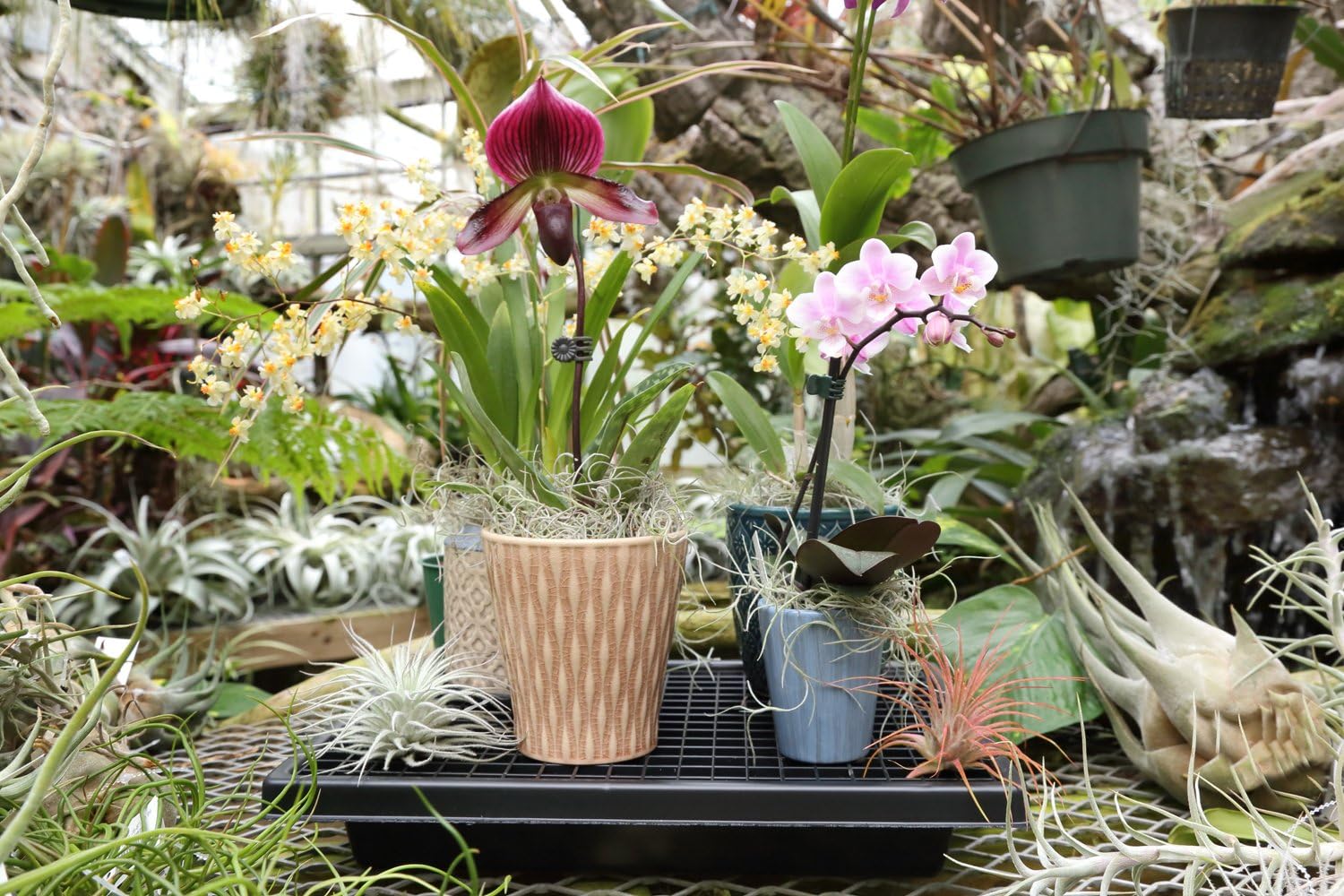
Humidity tray, check price on Amazon.
Heavenly Orchids participates in affiliate marketing programs, which means we may earn commissions on qualifying purchases made through our links. We only recommend products we genuinely believe in.
Want Healthier Orchids? Get Your Free Care Guide Now!
Mealybugs
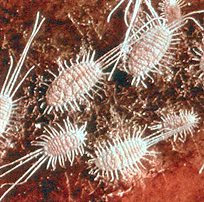
Mealybugs are small, white, cottony pests that love to feast on flowers, buds, and new growth. They often hide in crevices, under leaves, and near the base of the plant.
Treatment:
- For leaves and stems, use a 50% isopropyl alcohol and water solution. Apply with a cotton swab or spray bottle, then gently wipe away the pests.
- For flowers, use a milder 20% isopropyl alcohol solution to avoid damaging delicate petals.
- If mealybugs attack the roots, remove the orchid from its potting mix, clean the roots with a 3% hydrogen peroxide solution, and let the plant dry in a well-ventilated area. Daily misting or placing the roots on moist sphagnum moss can help while you monitor for reinfestation.
Prevention Tip: Regularly inspect your orchids, especially in hidden areas, and use a fan to maintain good airflow around your plants.
Scale
Scale insects look like miniature barnacles and can quickly spread, causing significant damage. They come in white or brown varieties and are notoriously difficult to eradicate.
Treatment:
- Manually remove scale with a cotton ball soaked in a 50% isopropyl alcohol solution. Be thorough, checking leaf nodes and crevices.
- Apply a mineral oil-based insecticide (1% paraffin oil mixed with water and a few drops of dish soap) to suffocate remaining pests.
- Isolate, monitor often and retreat if necessary. After a period of six weeks, if you are satisfied that you have eradicated the scale, you can now repot your orchid.
- Repot the orchid in fresh medium after treating the roots with 3% hydrogen peroxide.
Prevention Tip: Always keep new orchids in isolation for a period of 6 weeks to monitor for any potential pests that you do not want to introduce to your collection
Orchid Pests: Spider Mites
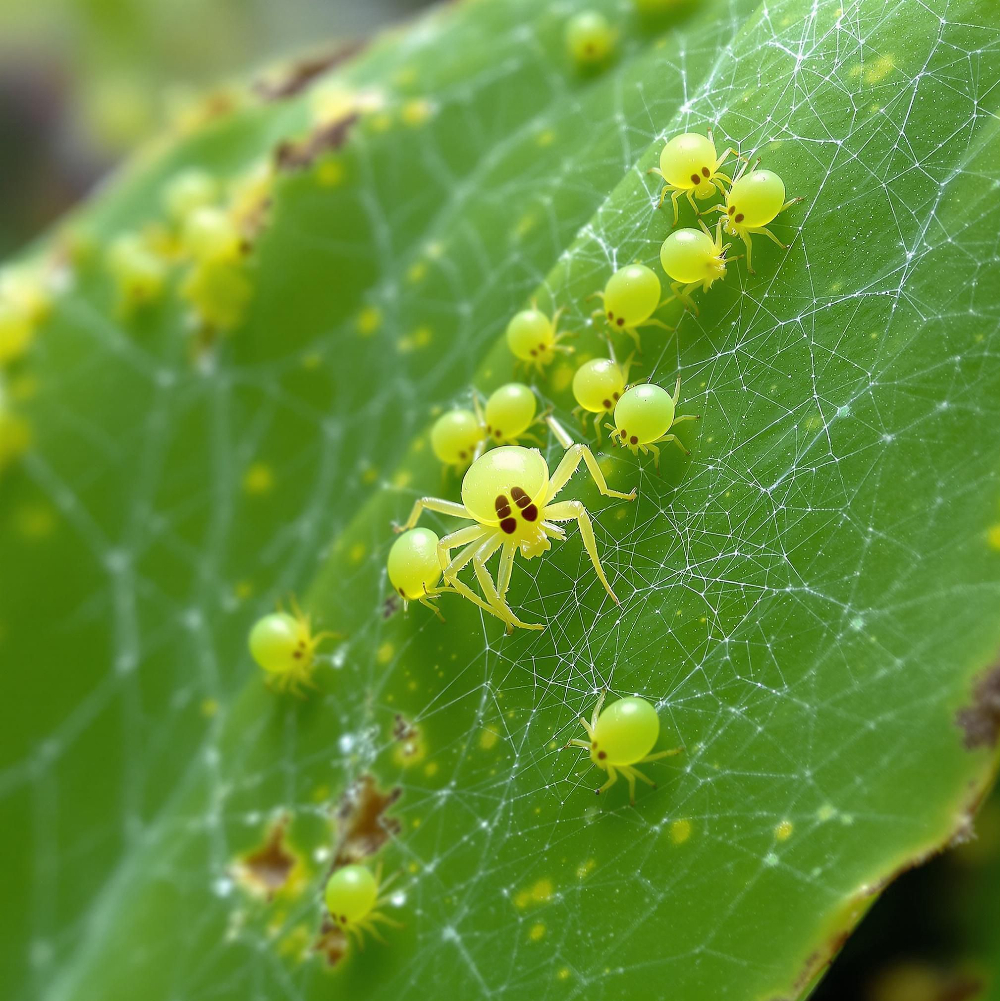
Unless you are extremely observant of your orchids, you will not likely notice spider mites until these orchid pests have multiplied and have caused some damage to your plants. Spider mites are tiny pests that suck sap from leaves, leaving behind telltale webbing. Regular spider mites are recognizable by their white webs, false spider mites are red and very difficult to see. Use a magnifying glass to inspect your plants, especially under the leaves, if you suspect that there is something wrong. They multiply quickly and can cause severe damage if left unchecked.
Treatment:
- Use a homemade insecticide made from 1% paraffin-based mineral oil, water, and a few drops of dish soap. Spray the leaves, especially the undersides, and wipe them clean.
- For severe infestations, consider using a chemical insecticide like Imidacloprid. Always wear protective gear and test on one plant first to ensure it’s safe for your orchids.
- Introduce predatory insects like lacewings or predatory mites for a natural solution, especially in outdoor or conservatory settings (only if you are not using an insecticide.)
Prevention Tip: Keep humidity levels moderate, use a cool mist humidifier and avoid placing orchids in dry, hot areas where spider mites thrive.

Home Made Insecticide
One of the most popular, affordable and effective ways to get rid of spider mites is with a homemade mineral oil based insecticide. A homemade insecticide can be made by adding 1% by volume of a paraffin based mineral oil such as baby oil to water and adding a few drops of liquid dish detergent to act as a surfactant to mix the mineral oil with the water. It is also best to remove the orchid from the growing medium and to spray the roots with 3% hydrogen peroxide. Thoroughly spray the leaves on the top and undersides with the mineral oil insecticide
Use Predatory Insects
Mites can be very difficult to eradicate, and they can re appear from outdoors, especially if you keep your orchids outdoors in the summertime. It is possible to use predatory insects to control spider mites and even possibly eradicate them. It is important that if you commit to using predatory insects that you do not use any insecticide. Predatory mites and Lacewings are effective predatory insects that will control a variety of orchid pests, but perhaps not what you want in your indoor garden. If you have an outdoor garden or a conservatory, you may find that introducing predatory insects works for you. Insecticidal treatments will harm the predatory insects, so it takes a commitment to this method if you choose to go this route.
The Nuclear Insecticide Option For Orchid Pests
For severe infestations, a stronger option is to use for orchid pests is a chemical insecticide like Avid (Abamectin). Avid is highly effective against spider mites and other stubborn pests, but it is a toxic chemical and should be handled with care. This is the option of last resort. Always wear protective gear, including gloves, a mask, and goggles, when applying it.
While Avid works well on many orchid species, avoid spraying the roots directly. It’s best used as a last-resort treatment after other methods have failed. Apply two treatments, spaced according to the product instructions, and combine this with a thorough cleaning of the growing area, pots, and tools. Repot your orchid in fresh growing medium to prevent reinfestation.
Keep in mind that mites can return through open windows or on new plants, so regular inspections are crucial. If you decide to use Avid, test it on one plant first and wait a few days to ensure it doesn’t cause harm. After treatment, keep your orchids out of bright light or direct sun and provide good airflow, such as with a fan, to help them recover.
While I’ve had success with Avid, it’s important to proceed cautiously, as it may not be suitable for all orchid varieties. Always prioritize safer methods like neem oil, Imidacloprid or insecticidal soap before resorting to chemical treatments.
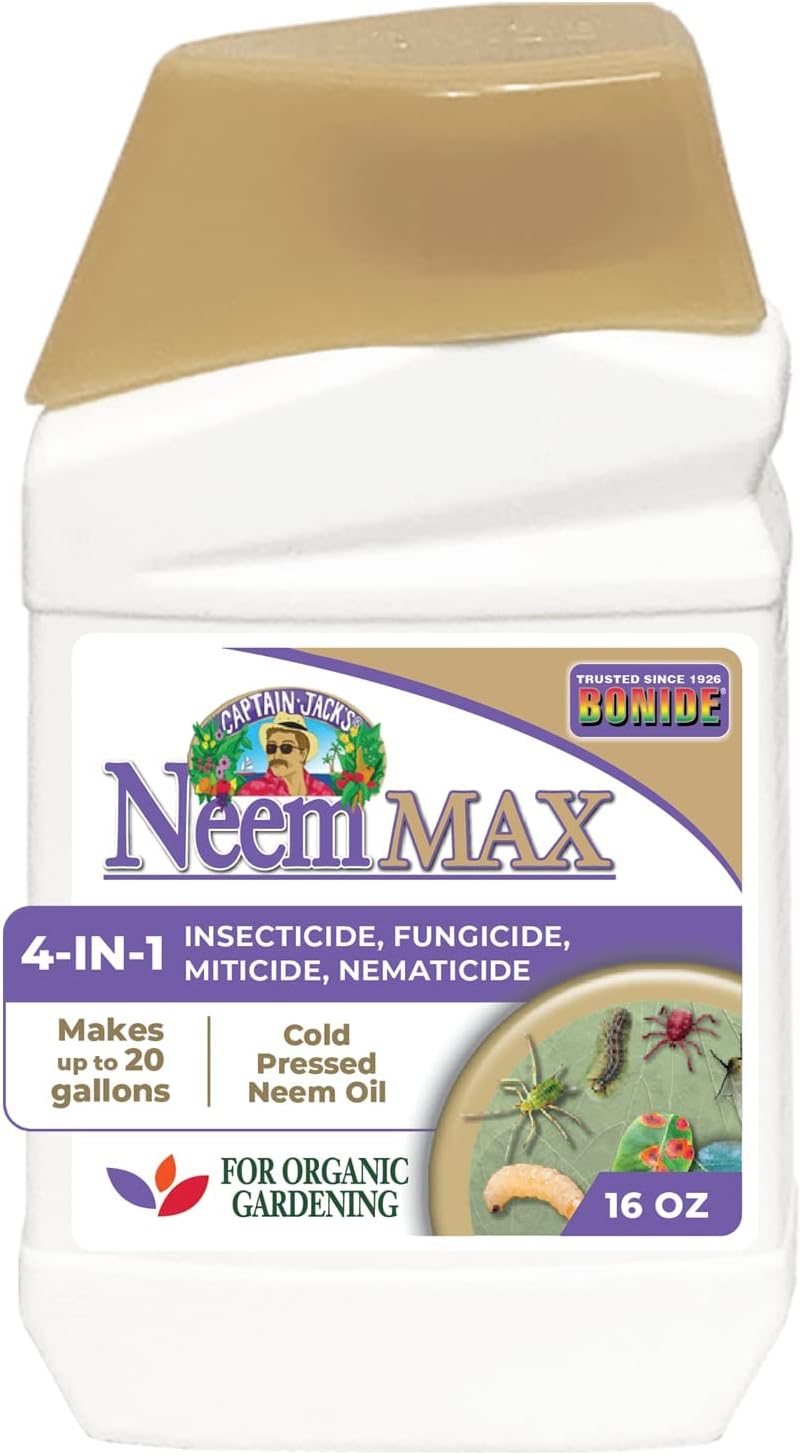
- For Organic Gardening
- Kills All Stages of Insects
- Use on Any Plant
- Use as Spray or Drench
- Concentrated Formula
Plants love Neem oil, watch them become invigorated after Neem treatment.
Thrips
Thrips are small, winged insects that harm orchids by piercing the plant’s surface and feeding on its sap. They are particularly drawn to new growth, flower buds, and spikes, making them a frustrating pest for orchid growers.
Treatment:
- Start with Safer Options: For mild infestations, begin with insecticidal soaps or neem oil. These are gentle on orchids and effective against thrips when applied consistently.
- Systemic Insecticide (Imidacloprid): If thrips persist, use a systemic insecticide like imidacloprid. It’s absorbed by the plant and provides long-lasting protection while being safer for orchids compared to harsher chemicals.
- For a non-toxic approach, introduce yellow sticky traps to catch adult thrips and monitor their population
Non-Chemical Option:
In outdoor or greenhouse settings, you can introduce predatory insects like lacewings or predatory mites. These natural predators can help control thrip populations without the need for chemicals.
Prevention Tip: Regularly inspect new growth, flower spikes, and buds for early signs of thrips. Catching them early makes treatment easier and less invasive.
By following these steps, you can effectively manage thrips while keeping your orchids healthy and thriving. Consider adding a tabletop waterfall fountain to your orchid room, it not only adds a calming ambiance to your indoor garden but also helps maintain humidity levels, which can deter pests like spider mites and thrips.

Indoor Tabletop Waterfall Fountain
- Creates a soothing sound of flowing water.
- Helps maintain optimal humidity for orchids.
- Adds a decorative, zen-like touch to your space.
👉 Check Price on Amazon
Aphids
Aphids are small green insects about the size of a needle pinhead. They damage your plants by penetrating the epidermis of the plant with their pincer like cornicles and feeding on the sap. They can also cause fungal diseases, so it is very important to treat them as soon as possible. Fortunately, they’re one of the easiest pests to control.
Treatment:
- Rinse your orchid under lukewarm water to dislodge aphids.
- Follow up with a spray of insecticidal soap or a homemade solution (1% mineral oil, water, and a few drops of dish soap). Repeat weekly for 2-3 weeks.
Prevention Tip: Keep your orchids clean and free of dust, which can attract aphids. A high-quality grow light ensures your orchids receive the right amount of light, even in low-light environments. Healthy orchids are more resistant to pests, and a grow light can help them thrive.
Aspect World's First Decor Grow Light - Large White Luxury LED Grow Light – for Medium and Large Plants. Optimal Plant Growth & Aesthetic Lighting. Versatile Placement, Easy Setup. Durable & Elegant Design.
Hand-built in the USA.
Fungus Gnats
Fungus gnats are small, flying insect orchid pests that lay eggs in moist potting media. Their larvae feed on organic matter and can damage orchid roots.
Treatment:
- Allow the potting mix to dry out between waterings to discourage gnat larvae.
- Use sticky traps to catch adult gnats.
- For severe infestations, apply a biological control like Bacillus thuringiensis (Bt) to target larvae.
Prevention Tip: Avoid overwatering and ensure your potting mix is well-draining.
Snails and Slugs
Snails and slugs are nocturnal pests that chew on orchid leaves, roots, and flowers. They thrive in humid environments and can be particularly problematic in greenhouses or outdoor gardens.
Treatment:
- Handpick snails and slugs during the evening or early morning.
- Use snail bait or traps, but ensure they are safe for orchids.
- Keep the growing area clean and free of debris where these pests can hide.
Whiteflies
Whiteflies are small, flying insects that feed on plant sap, often found on the undersides of leaves. While less common, they can weaken orchids and spread diseases.
Treatment:
- Use yellow sticky traps to catch adult whiteflies.
- Spray with insecticidal soap or neem oil to control infestations.
- Introduce natural predators like ladybugs or lacewings in outdoor settings.
General Tips for Pest Control
- Neem Oil: A natural insecticide, neem oil is effective against many orchid pests. Mix according to the instructions and apply weekly.
- Hygiene: Always sterilize tools and pots before use to prevent spreading pests.
- Ventilation: Good airflow helps deter pests and keeps your orchids healthy.
Adding an indoor tabletop waterfall fountain not only enhances the aesthetic of your orchid oasis but also helps maintain humidity levels, which can deter pests like spider mites and thrips. Plus, the gentle sound of flowing water creates a relaxing atmosphere for you and your plants. By staying vigilant and addressing pest problems early, you can keep your orchids thriving. For more tips and orchid care essentials, check out our recommended products in this article.
We hope you found this information useful and if you like Heavenly Orchids, please join our mailing list for monthly updates.
